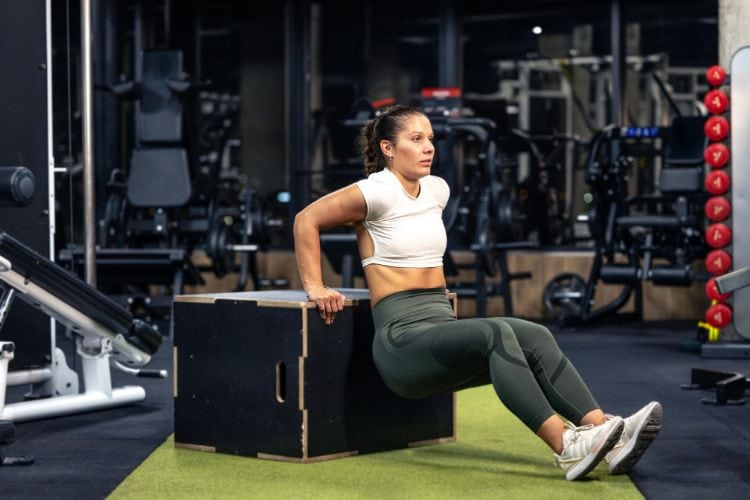Sign up for workout ideas, training advice, reviews of the latest gear and more.






If you’re short on time but committed to gaining strength and building lean muscle, a 30-minute progressive overload strength training plan might be the most efficient solution for your fitness goals. This scientifically-backed method allows you to improve strength, endurance, and muscle mass without spending hours in the gym. Whether you’re training at home or in a gym, progressive overload provides a structured, measurable approach to consistently level up your workouts.
In this guide, we’ll walk through the essentials of progressive overload, outline an effective 30-minute workout plan, and provide actionable tips to optimize results. Perfect for both beginners and intermediate lifters, this plan will ensure you’re maximizing gains in minimal time.
Progressive overload is a foundational principle in strength training that involves gradually increasing the stress placed on your muscles to stimulate growth and adaptation. This can be achieved in several ways:
By consistently applying one or more of these strategies, your muscles are forced to adapt, grow, and become stronger. Without progressive overload, your body becomes comfortable with your current routine, leading to plateaus in performance and physique.
By gradually increasing resistance or volume, you encourage your muscles to adapt and grow efficiently. This technique targets muscle hypertrophy and strength simultaneously.
Progressive overload is one of the most effective ways to build raw strength. With consistent practice, you’ll lift heavier, push harder, and develop stronger stabilizer muscles.
As muscle mass increases, so does your resting metabolic rate. This means your body will burn more calories throughout the day, even while at rest.
Progressive overload gives your workouts a measurable structure. Instead of repeating the same routine weekly, you track and tweak performance for continual progress.
A well-designed 30-minute session using progressive overload can rival longer workouts in terms of effectiveness, especially when intensity and consistency are high.
This workout is ideal for:
You don’t need fancy equipment or hours at the gym. What you need is commitment, focus, and a plan.
To make the most of your 30 minutes, this plan is structured as follows:
You’ll train using compound movements and progressive overload strategies that focus on pushing your limits over time.
Here’s a suggested weekly split using progressive overload:
Each workout should take no more than 30 minutes, including warm-up and cooldown.
Let’s break down a full session you can follow. This sample focuses on Upper Body Push Day.
Perform 30 seconds each:
Purpose: Increase blood flow, prime joints and muscles for lifting.
Perform 3 rounds of the following. Rest 30–45 seconds between sets.
Stretch and hold each for 30–60 seconds:
Cooldown promotes flexibility, recovery, and reduces injury risk.
Keep a workout journal or app to track sets, reps, and weights. This helps identify when and how to progress.
Don’t change everything at once. For example, increase reps on Week 2, then add weight in Week 3.
Never sacrifice technique for heavier weights. Always master the movement first before increasing load.
Squats, deadlifts, rows, presses, and pull-ups should be the foundation. These build the most strength and muscle efficiently.
Sleep, hydration, and proper nutrition are critical for recovery and continued progress. Progressive overload without recovery leads to overtraining and injury.
Whether you train at home or in a gym, the workout can be adapted:
Research shows that training intensity and consistency matter more than session length. A focused 30-minute workout using progressive overload can:
It’s not about duration, but the quality of your effort.
Eat a high-protein, nutrient-rich diet to support muscle repair and energy. Ideal macro breakdown:
Stay hydrated and fuel pre- and post-workout with balanced meals.
Train 3–4 times a week and rest 1–2 days to allow muscle recovery. Use active recovery (e.g., walking, yoga) on rest days.
Progressive overload works best with long-term consistency. Track progress, revisit goals monthly, and adjust as needed.
If you’re serious about building strength, improving muscle tone, and making your workouts more efficient, this 30-minute progressive overload strength training plan delivers real results. It’s ideal for busy professionals, home gym warriors, or anyone who wants a no-fluff, results-driven routine.
Remember: it’s not how long you train, but how smart and consistently you train that creates transformation.
Yes! With focused progressive overload and compound movements, 30-minute sessions can effectively build muscle when paired with proper nutrition and recovery.
Beginners may see noticeable changes within 4–6 weeks. Intermediate lifters may need 6–8 weeks depending on the intensity and consistency.
Yes. Building muscle increases your metabolism. Combining strength training with a calorie-controlled diet promotes fat loss and lean definition.
All it takes is 30 minutes, a plan, and a commitment to progress. Start your progressive overload strength training routine today and experience how consistent, smart training can change your body—one rep at a time.
Want more workout and video guide?
Follow us on Pinterest, Facebook, and Subscribe to our Newsletter and Stay tuned for FREE downloads of our App coming soon!
Stay up to date on the latest women’s health, fitness and lifestyle trends and tips.